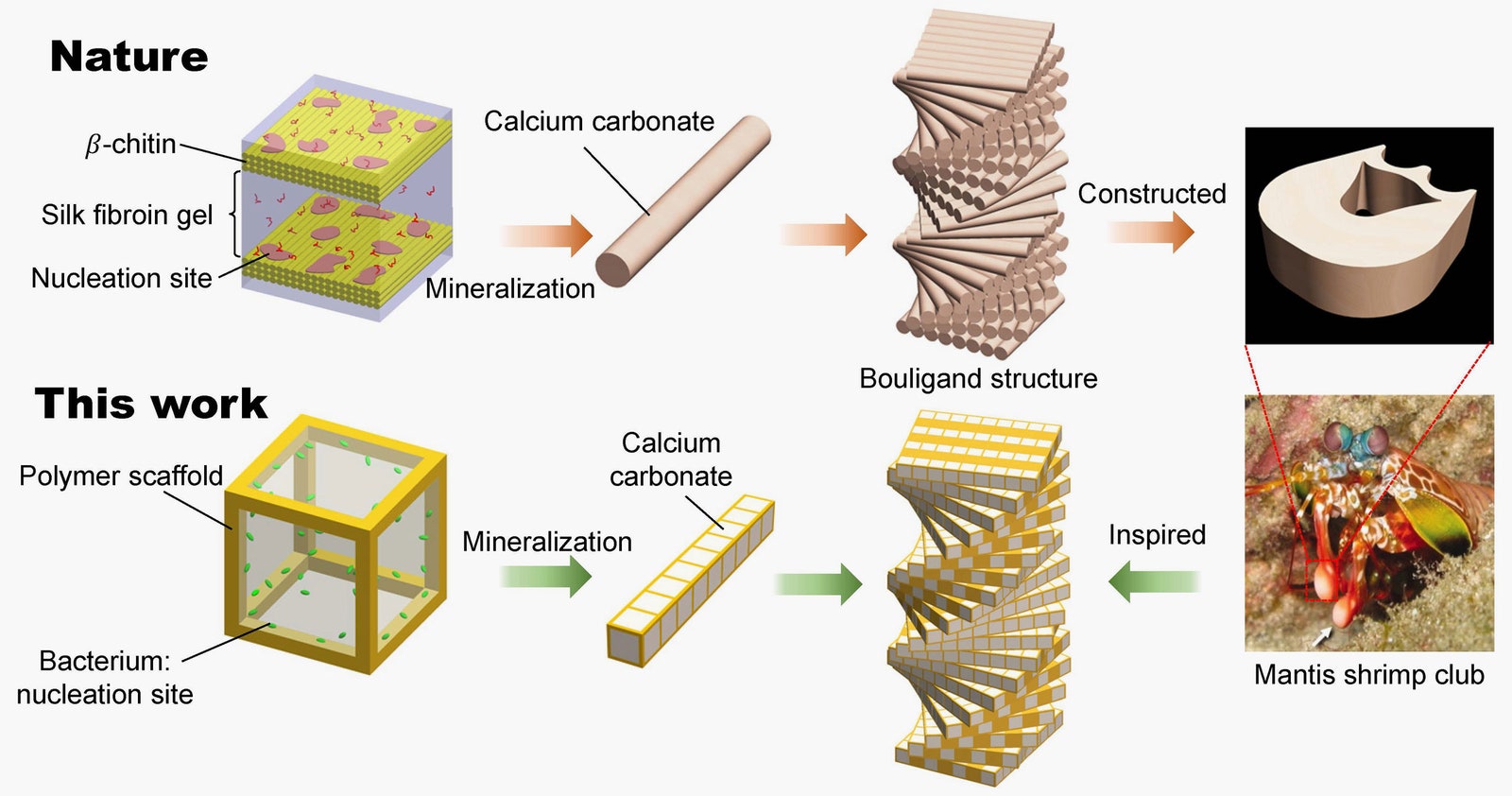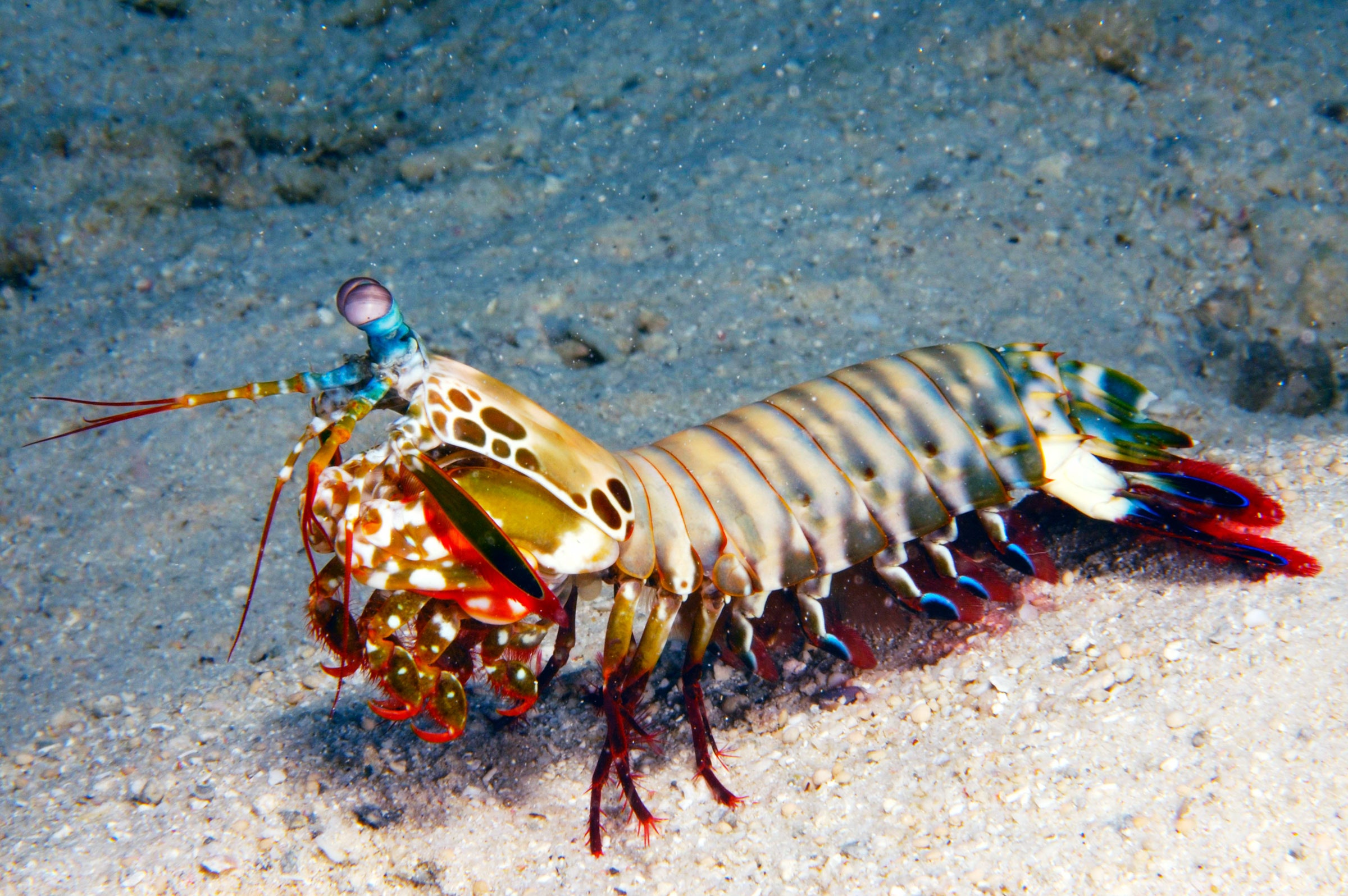Don’t get fooled by the colourful, unsuspecting demeanour and size of the mantis shrimp. Known as “death incarnate” to its prey on the seafloor, the crustacean hides two hammer-like appendages under its face, releasing them with such force that they can not only break open clam shells (considered one of the toughest materials in nature) but, can also blow off the claws of a crab so it can’t defend itself.
It requires some serious force to be able to achieve this feat yet, the hammers of the shrimp remain intact. This is owed to nature’s evolution that lent a “Bouligand” shape to the hammers. Instead of the layers of the material neatly stacked atop another, the layers of this shape resembles the helical structure of a DNA. When punched, the hammer of the shrimp distributes the energy of the impact across this twisted shape, hence keeping it intact.

Inspired by this, engineers at the University of Southern California and University of California, Irvine created an innovative material based on the mantis’ clobber-sticks. It doesn’t end here — they’ve managed to grow minerals in a 3D-printed Bouligand structure with the help of bacteria of all things!
There are many things that makes this bacteria-based material special: from its impeccable resilience to absorb high intensities of force to its light-weight characteristic. But, one of the things that makes it more special is its ability to regenerate. It is speculated that in the future, this material can be used to rebuild roads merely by introducing bacteria to the crevices. These structures are said to be very tough, very strong and can potentially repair themselves. Though still speculative, it is extremely intriguing to wonder how instead of building roads, we could simply grow them. Perhaps this feat of biomimicry could one day lend to a smooth ride.

Share your thoughts and join the technology debate!
Be the first to comment